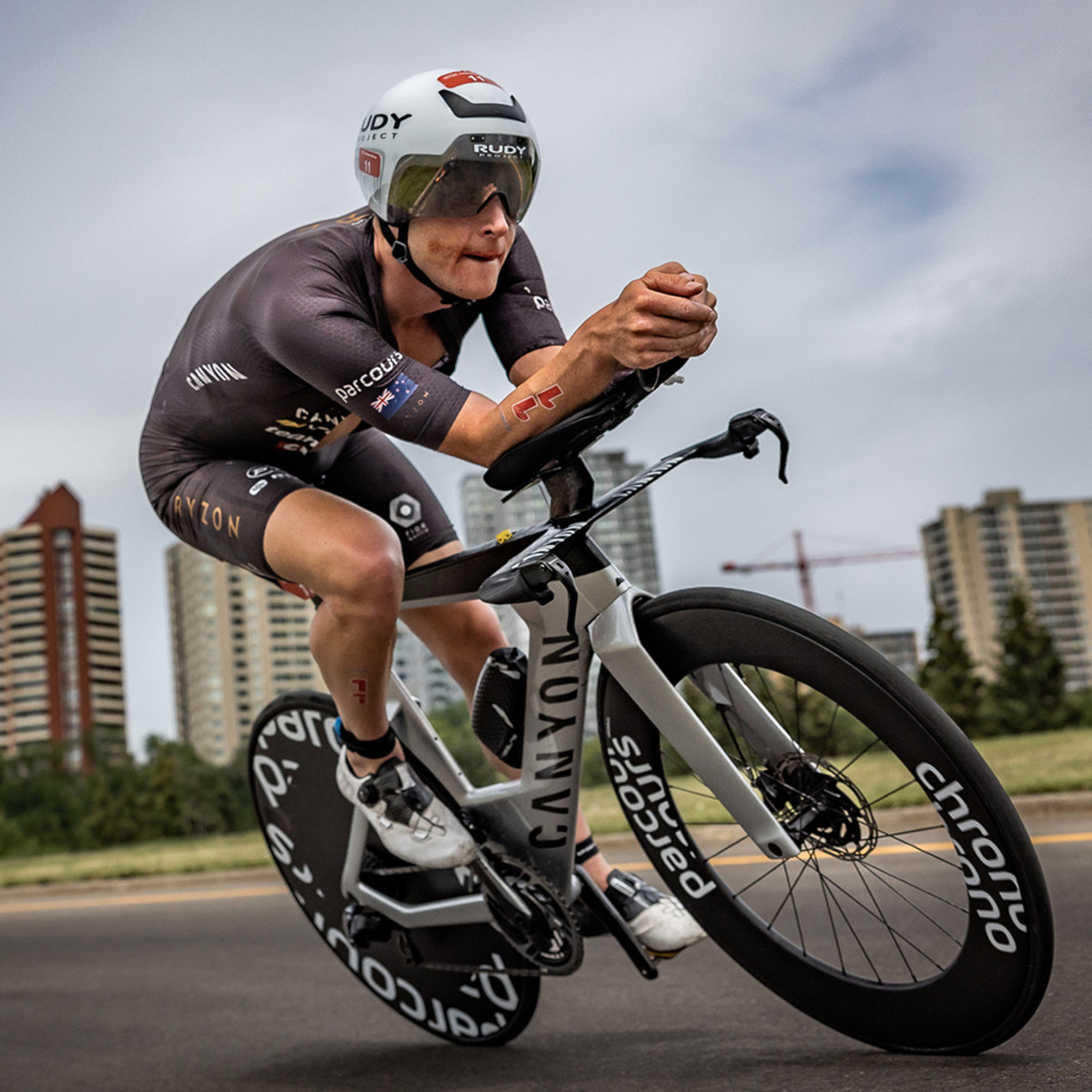
Kyle Smith
T100 London
Kyle's headline numbers
Kyle's strategy
Fueling
Carbohydrate is the main fuel you burn when racing. Failing to fuel properly is a leading cause of underperformance in longer races.
Kyle’s pre-race carb intake was much higher than normal, as he had several hours to fill before the start due to the abnormal early afternoon gun time. Carrying an extra bottle of carbs on the bike in case he dropped one riding over the rough London roads paid off, as his competitors’ bottles ejected left and right, littering the roads. But, when Kyle did inevitably drop a bottle, it didn’t impair his fueling strategy, and he was still able to average a higher carb intake than he did at his last T100 race in San Francisco, where he also lost a bottle. Even though his carb intake fell by ~55% from bike to run, as he missed two of his three planned bottles of PF Carb Only Drink Mix from the pro personal needs aid stations, he still took enough to produce the second fastest run split of the day.
Hydration
Taking on board an appropriate amount of fluid and sodium is essential to maintaining blood volume and supporting the cardiovascular effort needed to perform on race day.
Whilst the absolute amount of sodium and fluid consumed per hour is important, it’s critical to consider these in relation to each other. This is known as 'relative sodium concentration' and it’s expressed in milligrams per litre (mg/L). How much sodium you’re taking in per litre of fluid is more important than the absolute amount taken in per hour.
Sweat sodium concentration (mg/L) is largely genetically determined and remains relatively stable. Knowing how salty your sweat is enables you to replace a good proportion of your sweat losses, which can range from 200-2,000mg/L.
Whilst Kyle’s losses are on the low side, getting his hydration strategy right is still crucial when it’s hot and/or humid as his higher sweat rate in these conditions can result in significant net losses over the duration of a race.
Learn moreKyle is a heavy sweater, so for a race of this intensity in relatively warm conditions, his sodium preload was super important to help him toe the line optimally hydrated. As a result of the afternoon start time, he was able to double the volume of PH 1500 he drank pre-race, but maintaining the targeted high concentration of sodium to achieve the benefits of preloading. His increased thirst levels on the bike drove up his fluid intake, but overall he felt like he hydrated well relative to his high sweat rate.
Caffeine
Beyond the Three Levers of Performance (carb, sodium and fluid), caffeine is one of only a few substances that is proven to improve performance for most endurance athletes as it can help stave off mental and physical fatigue.
In addition to his morning coffee, Kyle doubled up his pre-race caffeine hit, taking one PF 30 Caffeine Gel ~30 minutes beforehand, and another with ~10 minutes to go. He knew the race was going to be aggressive, so wanted to ensure he was firing on all cylinders when the gun went off. Topping up with two more PF 30 Caffeine Gels during the bike helped him consume towards the top end of the scientific recommendations, reaping the associated benefits during the tough end of the run.
How Kyle hit his numbers
Here's everything that Kyle ate and drank on the day...
Kyle's weapons of choice
Final thoughts
Kyle's full stats
Data Confidence?
There is good confidence in the accuracy of the data reported. An athlete feels that the numbers closely reflect what they consumed despite a couple of estimations which may carry some degree of error. The majority of what was consumed is recorded to a high level of specificity (most volumes are known through the use of bottles brands quantities flavours). The numbers are very plausible and align with previous data recordings (if an athlete has collected data previously).